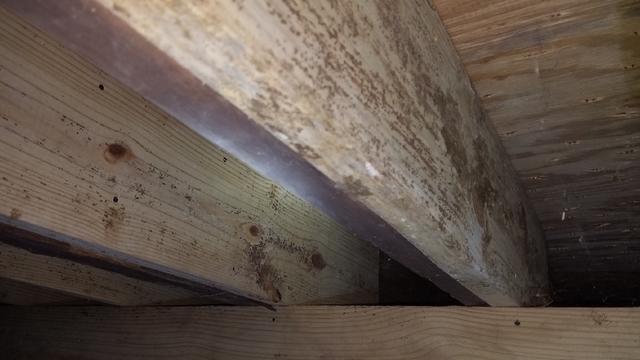
Mold and Mildew Growth
Mold has formed along the floor joists of this crawl space. This can occur on any organic materials in the crawl space when the relative humidity reaches over 60% during warmer temperatures. Musty odors and mold spores can find their way up into the home and irritate those with allergies and asthma.
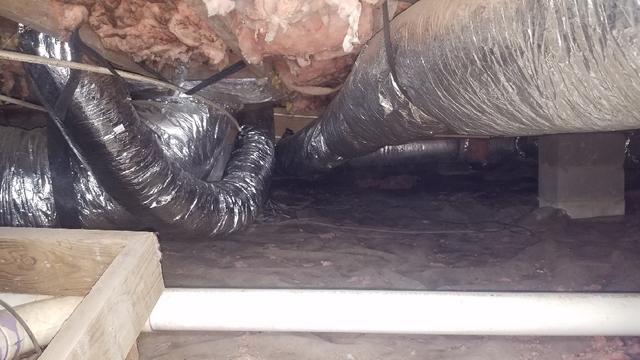
Falling Fiberglass and Failing Vapor Barrier
This 6-mil liner originally installed in this crawl space is torn in many places, and not sealed to the walls or piers of the crawl space, which allows moisture to rise from the earth and into the area. This can increase the relative humidity of the crawl space, which can then cause mold and mildew growth, and even cause the fiberglass insulation to become too heavy and saturated with water, causing it to fall out of place.
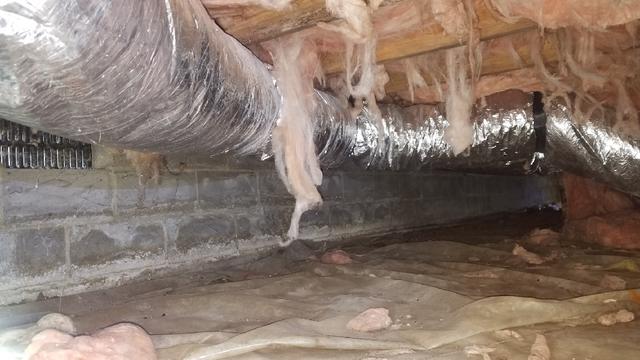
Porous Foundation Walls and Open Vents
The walls of this crawl space are made with porous cinderblock walls, which means that moisture can seep through them and affect the relative humidity and environment of the crawl space. Open vents lining the walls are also allowing outside air and moisture to freely enter, which can also affect the environment of the crawl space.
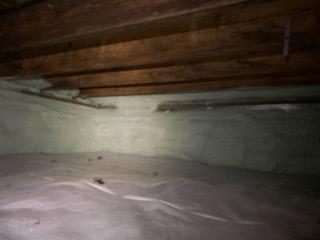
Mold Remediation
We used an antimicrobial, called Shockwave, to eliminate mold and mildew from the floor joists of the crawl space. This solution will kill mold spores but it will not remove any staining left behind from mold or mildew growth. It is also important to note that mold can grow back if the relative humidity and environment are not controlled and regulated.
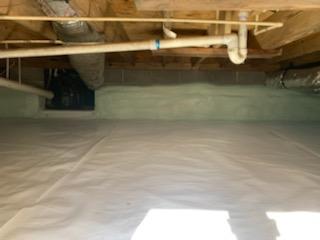
CleanSpace Vapor Barrier
Once the old liner and fiberglass insulation was removed from the crawl space, we installed a 10-mil CleanSpace Light vapor barrier over the dirt flooring. It gets wrapped and sealed around all piers and mechanically fastened on the foundation walls six to eight inches above outside grade. This will help to protect the crawl space from any moisture rising out of the earth.

Insulating Foundation Walls and Covering Open Vents
We used closed cell spray foam to cover the foundation walls of the crawl space. At an inch and a half thickness, this spray foam will act as an air barrier and vapor retarder, giving better protection to the crawl space. We leave a two-inch viewing strip at the top for termite inspectors, and any open vents lining the walls are internally covered with foam board before we apply the spray foam.


